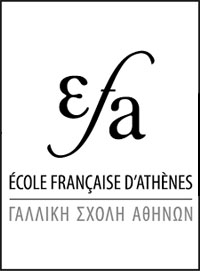Ancient Sikyon - 2014
Informations Générales
Numéro de la notice
6126
Année de l'opération
2014
Chronologie
Mots-clés
Édifice Public - Temple - Palestre - Stoa - Revêtements (mur et sol) - Édifice religieux - Établissement sportif - Espace commercial - Espace public - Production/extraction - Sanctuaire
Nature de l'opération
Institution(s)
Toponyme
Notices et opérations liées
Description
Sikyon. I. Lolos (ASA) reports on a second season of excavation in the area of the agora, south of the stoa where building remains of the Roman period had been found. Two rooms east of the group, apparently of industrial use, excavated in the previous year were investigated (Figs 1-2).
Southeast of the stoa was found part of another stoa orientated N-S, while the known stoa was orientated E-W. The new stoa is dated to the early Roman period and was single-aisled with a Doric colonnade on its façade.
In the northwest part of the agora the foundations of a small temple (c. 11 m. long by 7 m. wide) were uncovered (Figs 3-4), built at the end of the Classical or the beginning of the Hellenistic period; it was dismantled in the early years of the Roman period. There are carved mason’s marks on several of the stones.
In a trench in the northeast part of the palaestra its inner and outer corners were revealed, made of dry stone, tile and mortar. Outside the outer wall a semi-circular exedra was built in the same style and material in the later Roman period. The existence of two further exedrae – one orthogonal, the other semi-circular – were confirmed through geophysical prospection to the east of the excavated one and on the same exterior wall of the palaestra.
Southeast of the stoa was found part of another stoa orientated N-S, while the known stoa was orientated E-W. The new stoa is dated to the early Roman period and was single-aisled with a Doric colonnade on its façade.
In the northwest part of the agora the foundations of a small temple (c. 11 m. long by 7 m. wide) were uncovered (Figs 3-4), built at the end of the Classical or the beginning of the Hellenistic period; it was dismantled in the early years of the Roman period. There are carved mason’s marks on several of the stones.
In a trench in the northeast part of the palaestra its inner and outer corners were revealed, made of dry stone, tile and mortar. Outside the outer wall a semi-circular exedra was built in the same style and material in the later Roman period. The existence of two further exedrae – one orthogonal, the other semi-circular – were confirmed through geophysical prospection to the east of the excavated one and on the same exterior wall of the palaestra.
Auteur de la notice
John BENNET
Références bibliographiques
Ergon (2014), 24-28
Date de création
2017-07-19 00:00:00
Dernière modification
2023-11-16 08:27:00
Figure(s)
Fig. 2/ Ancient Sikyon: plan of the foundations in the first excavation south of the long stoa (A. Gounaris).
Fig. 3/ Ancient Sikyon: plan of the small temple in the third trench north of the palaestra (A. Gounaris).








